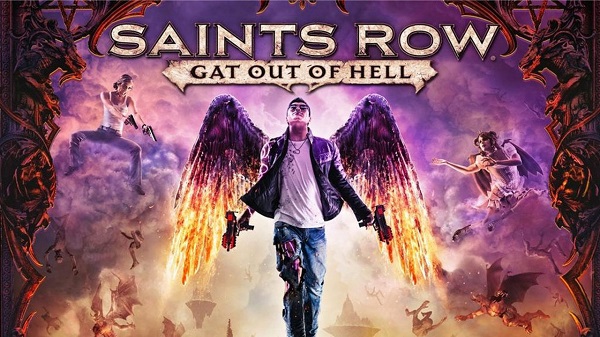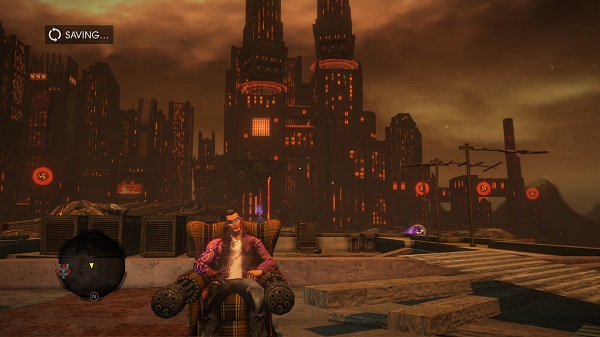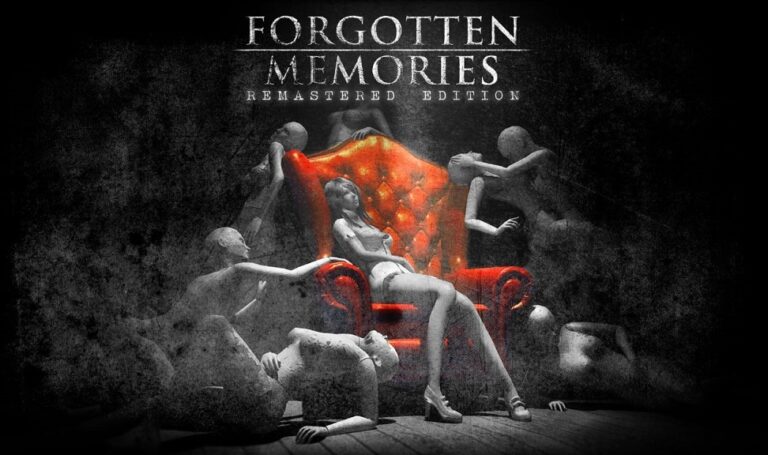
The Saints Row series is one of those IPs that has embraced its medium in order to further evolve its brand of self awareness. As we all know, the series started out as Volition’s answer to Grand Theft Auto. Starting as an open-world crime game starring a lowly street gang, the Saints and the games in which they occupy have mutated into something unrecognizable, and if you ask me it’s worked out well. Gone are the days in which the Saints battled for turf with rival gangs; they’ve saved the Earth from an alien invader, gained super powers, and have fought in their own version of The Matrix. And if that wasn’t enough, now they’re going to Hell.
Saints Row: Gat out of Hell is the latest release in the ridiculous but enjoyable Saints Row series. Released as a standalone game rather than an expansion to Saints Row IV, GoH takes place after the events of the fourth game and begins with The Boss celebrating his or her birthday. As a result of playing with a Ouija board, The Boss is pulled into hell by Satan himself, with the intent for The Boss to Marry his daughter, Jezebel. It’s an absurd premise, but that’s just to be expected from the series. And honestly, if you’re still upset about what the series has become, you’re better off looking elsewhere. As for myself, I love that Volition has embraced this no-rules approach. Anything can happen, and that’s what makes the latter part of the series so amusing. If you’re wondering, I really enjoyed Saints Row IV.

Set in the-place-where-bad-people-go, GoH takes the homicidal (but lovable) Johnny Gat and Kinzie Kensington to a brand new city that’s thematically appropriate. While not as large as the city in Saints Row IV, Hell features its own districts which float on lava and hellish lightning rains down onto the streets. With fire and brimstone as the aesthetic of choice, Hell is bleak, decayed, and devoid of color; the same can be said for its citizens which are damned souls – skinny, featureless husks that are monitored by Satan’s army. In a gameplay sense, the demons act as the police of hell and its citizens are merely the damned. Satan’s rule over hell is less like a dictatorship than expected as those with considerable pull can make a name for themselves in Hell, which leads us to a story that’s surprisingly less odd than expected.
After jumping into Hell, Gat and Kinzie meet an old nemesis: Dane Vogel, the villain from Saints Row 2. As their guide in the underworld, Dane arms Gat and Kinzie with Lucifer’s Cracked Halo, granting them powers similar to those that they had while in Zinyak’s simulation. The newest and most important gameplay addition to Gat out of Hell is the ability to fly. Only being able to glide in Saints Row IV, Gat and Kinzie can propel themselves through Hell with the wings of a fallen angel, zipping around collecting orbs and completing challenges. And while flying brings some uniqueness to GoH, flight, as well as the game as a whole, fall a little flat in creating an engaging piece of content within the Saints Row series.
With a few new and returning characters, Gat out of Hell‘s greatest and most memorable moments come from its story and character interactions. Aiming to take down Satan with the help of a small army, Gat and Kinzie enlist the help of Shakespeare, whom is now a DJ, Blackbeard, Vlad the Impaler, and the two DeWynter sisters. As usual from a Saints Row game, there’s a genuine, sometimes even wholesome tone to the humor despite its penchant for chaos, murder, and destruction. With referential humor that continues to touch upon popular media and even the series’ grounded roots before it became so insane, GoH‘s strongest moments are few and far between. The main storyline lasts all but 5 hours, but with an excessive amount of gameplay padding added into the last few missions, which are a series of activities – a small complaint I had with Saints Row IV, but one exacerbated in Gat out of Hell.

In terms of content, Gat out of Hell delivers a brand new city and several new activities, as well as some hellish themed variations of existing ones. Powers that can be unlocked consist of variations of powers found in Saints Row IV, but with a few different effects that are actually a bit better than the previous game. As far as weapons go, the standout award goes to a reclining chair that is outfitted with two gatling guns. It doesn’t make sense, but it’s amusing seeing Gat and Kinzie merely lean back without a care to give and unload on enemies. Additional weapons tied to GoH‘s many collectibles can be unlocked as well, with seven of them being themed after the deadly sins.
Character and skill progression moves along quite quickly in Gat out of Hell, and I guess that makes sense given its rather short runtime. And while it continues to deliver quality humor, the game as a whole, even despite its budget asking price of $20, feels lacking. I’d be a fool to call the game soulless, but it does feel like a stilted effort. Padding its story missions with activities made the latter half of the game tedious and uninteresting. Including swappable character control between Gat and Kinzie, but ignoring her actions within the narrative itself, was disappointing as well. The occasional stilted animations and framerate drops that I experienced on PC, despite lowering my game settings, didn’t help the experience either.

While Gat out of Hell does what Saints Row IV does well to a smaller degree, it’s not a must have purchase as this time. Is it fun? Of course it is, but it’s a game that I’d recommend to pick up further down the line on sale or only for fans itching for more Saints Row content. With a handful of endings that may hint at the future of the series, Gat out of Hell proposes a few interesting ideas and may act as a bridge to hold over fans between now and Saints Row V, but as it stands, it could have been better.
 (7 / 10)
(7 / 10)
Good
 (7 / 10)
(7 / 10)



